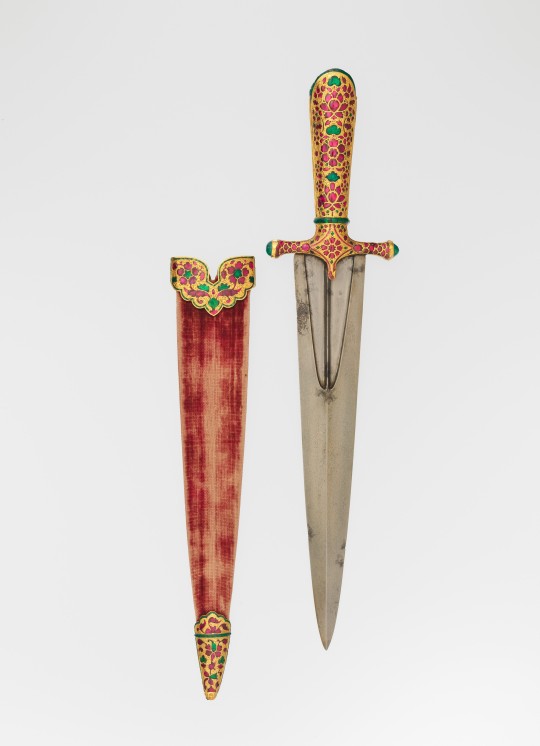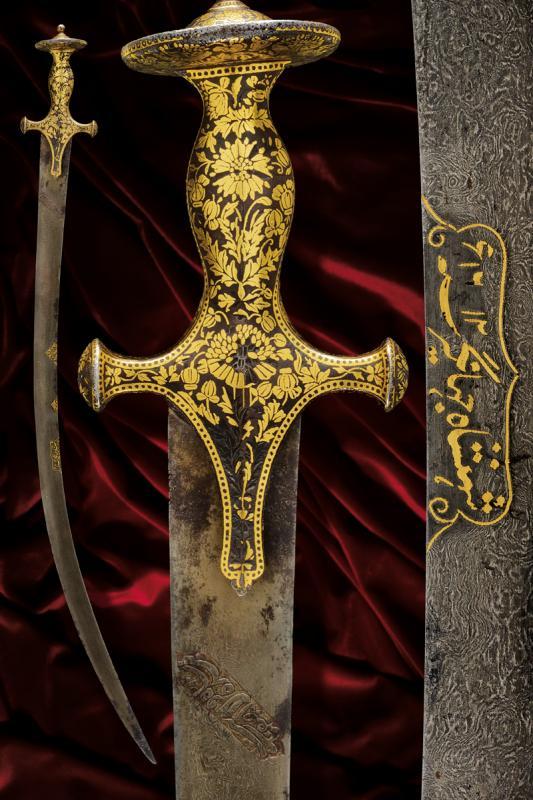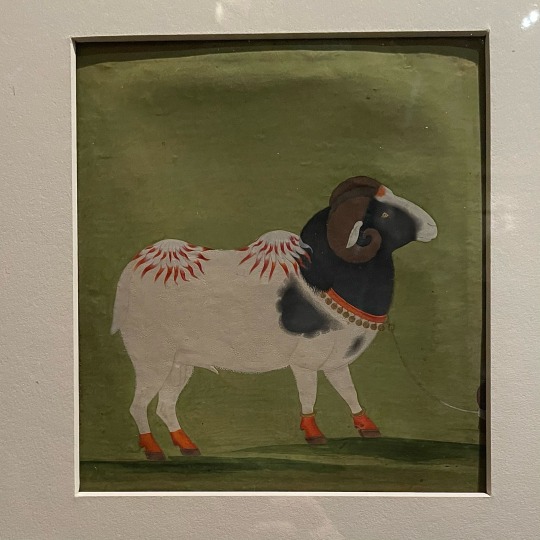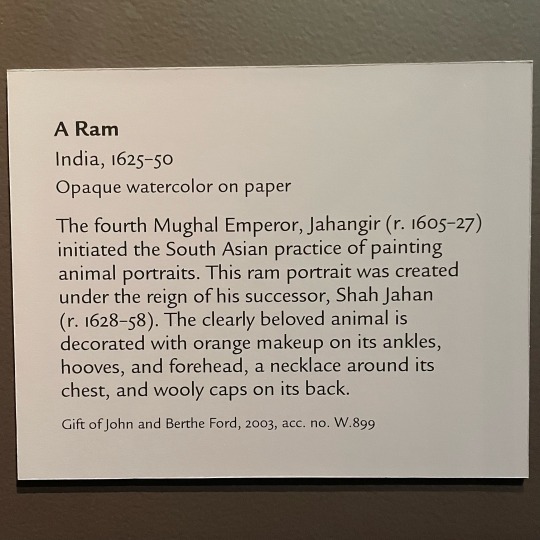#Mughal emperor Jahangir
Explore tagged Tumblr posts
Text
Nurpur Fort: A Chronicle of Devotion, Dynasty, and Divine Beauty in Himachal Pradesh
The heartland of Himachal Pradesh unfolds tales of ancient fortresses, each echoing the whispers of history. Nestled amidst the spectacular landscapes, Nurpur Fort stands as a testament to bygone eras, a silent witness to the interweaving of love, power, and divine connection. Legacy of Nurpur Fort: Situated in the city of Nurpur, towards the northwest of Kangra, this fort derives its name from…

View On WordPress
#Chakki rivulet#Dhameri Fort#Jhabbar Khud#King Jhet Pal#Lord Krishna#mar dynasty of Delhi#Meera Bai&039;s#Mughal emperor Jahangir#North-West of Kangra#Nurjahan#Nurpur Fort#Pathania clan of Rajputs#Raja Basu
1 note
·
View note
Photo
oh hello, Happy Birthday Jahangir. Will always remember him for the Dodo paintings from his extensive zoo and being Nur Jahan's husband.










Royal Birthdays for today, August 30th:
Peter, King of Castile and Leon, 1334
Vlad II Dracul, Prince of Wallachia, 1400
Jahangir, Mughal Emperor, 1569
Marie Ludovika Wilhelmine, Princess of Bavaria, 1808
Mathilde Caroline of Bavaria, Grand Duchess of Hesse, 1813
Alexandra Alexandrovna, Russian Grand Duchess, 1842
Alexandra Georgievna, Princess of Greece, 1870
Princess Lilian, Duchess of Halland, 1915
Vladimir Kirillovich, Russian Grand Duke, 1917
Anne-Marie of Denmark, Queen of Greece,1946
21 notes
·
View notes
Text

17th-century Tomb of the Mughal Emperor Jahangir in Lahore, Pakistan
British vintage postcard, mailed in 1908 to Paris
#pakistan#british#sepia#century#photography#jahangir#17th-century#vintage#mailed#postkaart#mughal#paris#ansichtskarte#ephemera#carte postale#postcard#17th#postal#lahore#briefkaart#emperor#photo#1908#tomb#tarjeta#historic#postkarte
6 notes
·
View notes
Text

Bandi Chhor Divas is a Sikh celebration that commemorates the day the sixth Guru of Sikhs, Guru Hargobind and 52 Hindu Kings were released from Gwalior Fort, who had been imprisoned by Mughal Emperor Jahangir. Emperor Jahangir had held 52 Kings at the Gwalior Fort for several months. #BandiChhor #BandiChhorDiwas Build your brand with digital media & take the benefits of social media branding contact Absolute Digital Branding & Public Relations. By Absolutedigitalbranding.com #Internetmarketing
#Marktingstrategy #SEObrandingagency #SEO #PPC #SMO #SMM #SeoCompany #digitalmarketingcompany #socialmediamarketingcompany #absolutedigitalbranding #searchengineoptimization #advertisingagencyinmohali #facebook #twitter #marketingonline #internetmarketing #follow #digitalagency #marketingagency #motivation #digitalmarketingtips #onlinebusiness #websitedesign #marketingonline #brand #ABSOLUTEDIGITALBRANDING #BEST #PUBLIC #RELATION #AGENCY #IN #CHANDIGARH #MOHALI #PUNJAB #NORTH #INDIA #onlinebranding #branding360degree #SEObrandingagency #websiteranking #websitetrafic #Digitalmarketing #OnlineAdvertising #instagrammarketing #web #technology #marketingonline #content #instagrammarketing #advertisingagency #web #buildingrelationships #globally #customer #internetbranding-at Absolute digital Branding & Public relations.
#Bandi Chhor Divas is a Sikh celebration that commemorates the day the sixth Guru of Sikhs#Guru Hargobind and 52 Hindu Kings were released from Gwalior Fort#who had been imprisoned by Mughal Emperor Jahangir. Emperor Jahangir had held 52 Kings at the Gwalior Fort for several months.#BandiChhor#BandiChhorDiwas Build your brand with digital media & take the benefits of social media branding contact Absolute Digital Branding & Publ#Internetmarketing#Marktingstrategy#SEObrandingagency#SEO#PPC#SMO#SMM#SeoCompany#digitalmarketingcompany#socialmediamarketingcompany#absolutedigitalbranding#searchengineoptimization#advertisingagencyinmohali#facebook#twitter#marketingonline#internetmarketing#follow#digitalagency#marketingagency#motivation#digitalmarketingtips#onlinebusiness#websitedesign#brand
2 notes
·
View notes
Text

#sign#bilingual#English-Urdu#hunting resort of the Emperor Jehangir#Jahangir#Hiran Minar#Sheikhupura#Pakistan#Mughal architecture
0 notes
Text

Dagger with Scabbard
Indian, Mughal 1605–27
The hilt of the dagger is constructed of heavy sections of gold over an iron core and its scabbard mounts are of solid gold. All the intricately engraved surfaces are set with gems and colored glass finely cut with floral forms. The designs closely parallel those in Mughal painting of the early seventeenth century, suggesting the dagger dates from the reign of Emperor Jahangir (1605–27), whose deep love of nature, especially flowers, is well documented in his memoirs, the "Tuzuk." The blade is forged of watered steel.
854 notes
·
View notes
Text

Tulwar from the property of Emperor Jahangir, Mughal Empire, early 17th century
from Czerny's International Auction House
175 notes
·
View notes
Text

🔸The Magnificent Emerald, Gold and Enamel Wine Cup; belonged to Mughal Emperor Jahangir (r. 1605-1627 CE), from Northern (Mughal) India. This emerald originally mined in Colombia, and it was sold in India, where emeralds were much desired by Emperors of Mughal Empire (1526-1857 CE).
📸 Al Sabah Collection, Kuwait.
123 notes
·
View notes
Text
#WatercolorWednesday:


A Ram
India, Mughal, c.1625-50
Opaque watercolor on paper
The Walters Art Museum
“The fourth Mughal Emperor, Jahangir (r. 1605-27) initiated the South Asian practice of painting animal portraits. This ram portrait was created under the reign of his successor, Shah Jahan (r. 1628-58). The clearly beloved animal is decorated with orange makeup on its ankles, hooves, and forehead, a necklace around its chest, and wooly caps on its back.”
#animals in art#museum visit#Indian art#Mughal art#painting#watercolor#miniature painting#Watercolor Wednesday#South Asian Art#Asian art#Walters Art Museum#ram
25 notes
·
View notes
Text

The tomb of Itimad-ud-Daula in Agra, India. Built by Nur Jahan, the wife of the Mughal Emperor Jahangir, this tomb was made for her father, and the Vazir, Mirza Ghiyas Beg in the 1620s.
It's exterior surfaces are covered in inlay work in a variety of colourful stones, while it's interior boasts exquisitely preserved wall paintings of flowers, cypress trees and and beautiful overhead painted murqarnas vaulting. The trees and flowering plants, and the swirling clouds whose designs hold their origins further east and demonstrate the sustained exchange of motifs along the Silk Roads, a defining factor of arts from both the Mughal and Timurid empires.
via Jordan Quill
#history#nur jahan#jahangir#mughals#mughal history#india#agra#south asia#south asian#indian architecture#mughal architecture#islamic architecture#indian history#ots#desi tumblr#desiblr#desi academia
294 notes
·
View notes
Note
Other people still speaking Quenya doesn't mean that the banning of a language is not a form of cultural genocide (you can't recognize the term when applied in the clearest sense in fiction but accuse ofc it's “everybody else” that doesnt know what it means and minimizing it). If you wanna invoke “real life” shit, languages that have been banned are still public knowledge, doesn't mean barring them wasn't an act in the name of eliminating that culture. The lang. survived *despite* his actions, not bc he was so accepting of them. And attempting to monopolize the common tongue or make your own tongue the lingua Franca of a place is still... xenophobic? It's xenophobia.
He wasn't "making" his language the lingua franca of Beleriand. It already was. Thingol was protecting his culture and people from being assimilated into the Noldor, who came with the express intent of establishing their own kingdoms and showed disdain towards the Sindar ("dark elf in his dark caves"). And like I said in the post, the ban was a way to enact some sort of consequence for the Noldor who murdered his brother's people, stole and burned their ships, lied to him about it and also disrespected him and his people. I really don't think he was trying to "eliminate" Noldorin culture. He told Finrod where to build Nargothrond because Finrod valued his input and showed respect and admiration for the Sindar. He honored Hurin and Morwen even though they were vassals of Fingolfin/Fingon. He doesn't prevent Cirdan or the Laiquendi from establishing positive relations with the Noldor, and he takes in Noldorin refugees after Nargothrond's fall, as well as Sindar who worked for the Noldor after Bragollach. The ban was his way of protecting Beleriandic/Sindarin culture, showing his authority, and yes, as a consequence for the Kinslaying.
I expressly did not "invoke real life shit" in my post because I don't feel comfortable using terms like racism to describe fantasy events (unless we're talking about authorial intent like how Tolkien wrote the Haradrim and Easterlings, which was undoubtedly racist). But if you want to go down that path, don't forget that Thingol and the Sindar were native to Beleriand, and the Noldor came to take and rule territory (among other reasons). Again, do not like applying this here and it's not an exact comparison but if we go with a simplified idea of colonizer/colonized, then the Sindar are in the position of the colonized. In a (limited) comparative hypothetical scenario, the ban is like if Mughal emperor Jahangir banned English in the subcontinent and told his subjects to speak only Persian/Hindi-Urdu with the East India Company. I see nothing wrong with that.
Also, not only did Quenya survive and remain accessible, in LotR it was still considered the "High Elven" tongue compared to Sindarin, so the ban didn't even make it taboo or associated with kinslaying.
To each their own though. I'm just defending my opinion, I don't expect you to agree with me.
31 notes
·
View notes
Note
Who is your favorite "unknown" mughal princess? By unknown I mean like women like Gauhar Ara begum, Nadira Banu begum, Zinat un nissa begum who were not documented so well.
*laughs*
Anon, that is a dangerous topic to get me started on. I have quite a few (and I'm omitting some of the big names that I also adore: Arjumand Banu, Mihrunissa, Hamida Banu Begum, etc.)
Khanzada Begum- Babur's sister, and--depending on which version you believe--either abandoned or straight up sold to Babur's enemy Shaybani Khan during Babur's escape. But! she wound up surviving both her marriage to the enemy, and returned to her now-victorious brother, subsequently marrying again under happier circumstances and becoming (according to some sources) the first Padishah Begum* of the empire.
*I feel like people often mistranslate this title as "Empress" or "Emperor's favorite wife," but it could just as often mean a beloved sister or daughter--basically, it was the most important woman in the royal family, and the one who effectively claimed the most power.
Gulbadan Begum - half-sister of Humayan, historian, and straight up nerd. Wrote her brother's biography, and delighted in telling embarassing anecdotes about him like any proper sibling. Loving aunt to Akbar; clever, independent, and fun.
Mah Chuchak Begum - widow of Humayan, ruler of Kabul (initially in the name of her son, apparently later just gave up on the pretense and ruled by herself). A hurdle in the path of the young Akbar's consolidation of the empire, she was unfortunately killed by her son-in-law. That said, years later, after her son had managed to piss off Akbar, her daughter Bakht-un-Nissa Begum wound up inheriting the governship of Kabul and apparently did a bang-up job of it.
Aram Banu Begum- Akbar's younger and favorite daughter, and explicitly a smart-aleck. Apparently Did Not get along with her half-brother Jahangir, to the point that one of Akbar's dying wishes was that the two get along. Never married, but seems to have been more a personal choice, rather than a strict decree against it. Seems to have been A Lot, in the best of ways.
Nadira Banu Begum- wife of Dara Shikoh, arguably in one of the happiest marriages of the dynasty. Dara never married anyone, and like her mother-in-law before her, Nadira joined her husband in exile and revolution. He apparently gave most of the paintings he loved to create to her, which is adorable; and did not survive her death by more than a few months.
Dilras Banu Begum - wife of Aurangazeb; apparently haughty and beautiful, and not a little terrifying. Interestingly, she was a devout Shia while Aurangazeb was a devout Sunni (to be fair, Shah Jahan and Mumtaz Mahal were also a very happy Sunni/Shia pair, but both Dilras and Aurangazeb were famously pious and much more religiously fixated than the prior generation). Died before her husband became Emperor, but her children would succeed him.
Zeb-un-nissa (&her siblings) - daughters of Aurangazeb, and talented poets, scholars, and artists. Particularly notable because while pop cultures has the later Mughal empire portrayed as either a joyless husk, or a decadent waste -- these women were clear contraindications to that generalization.
(I could go on, but these are the first few that come to mind!)
26 notes
·
View notes
Text
This is only for emperors, if you are going for Someone Else they have to have been an emperor at some point. So no Dara Shukoh or any of the queens. I might make a different poll for the queens if this takes off.
Don't vote on the basis of politics - they were all objectively bad people and this is a fun poll. Vote for who you think is the most blorbo and/or who you think you can fix etc.
#mughal empire#mughals#mughal history#india#indian history#history#history polls#south asia#south asian#desiblr#desi tumblr#desi academia#polls#babur#akbar#shah jahan#auranzeb#delhi
11 notes
·
View notes
Text

17th-century Tomb of the Mughal Emperor Jahangir in Lahore, Pakistan
Pakistani vintage postcard, mailed to Paris
#carte postale#jahangir#sepia#photo#tomb#postkarte#tarjeta#ansichtskarte#century#postkaart#ephemera#pakistani#postcard#vintage#17th-century#lahore#emperor#17th#historic#mailed#postal#paris#briefkaart#mughal#pakistan#photography
0 notes
Text
i need to brainstorm a sikh version of 'nail me to the cross about it'. just get mughal emperor jahangir to execute me for it why don't you. get emperor aurangzeb to behead me in chandni chowk. get your goons to bury me and my brother alive inside a brick wall if you hate me so much
32 notes
·
View notes
Text

1 note
·
View note